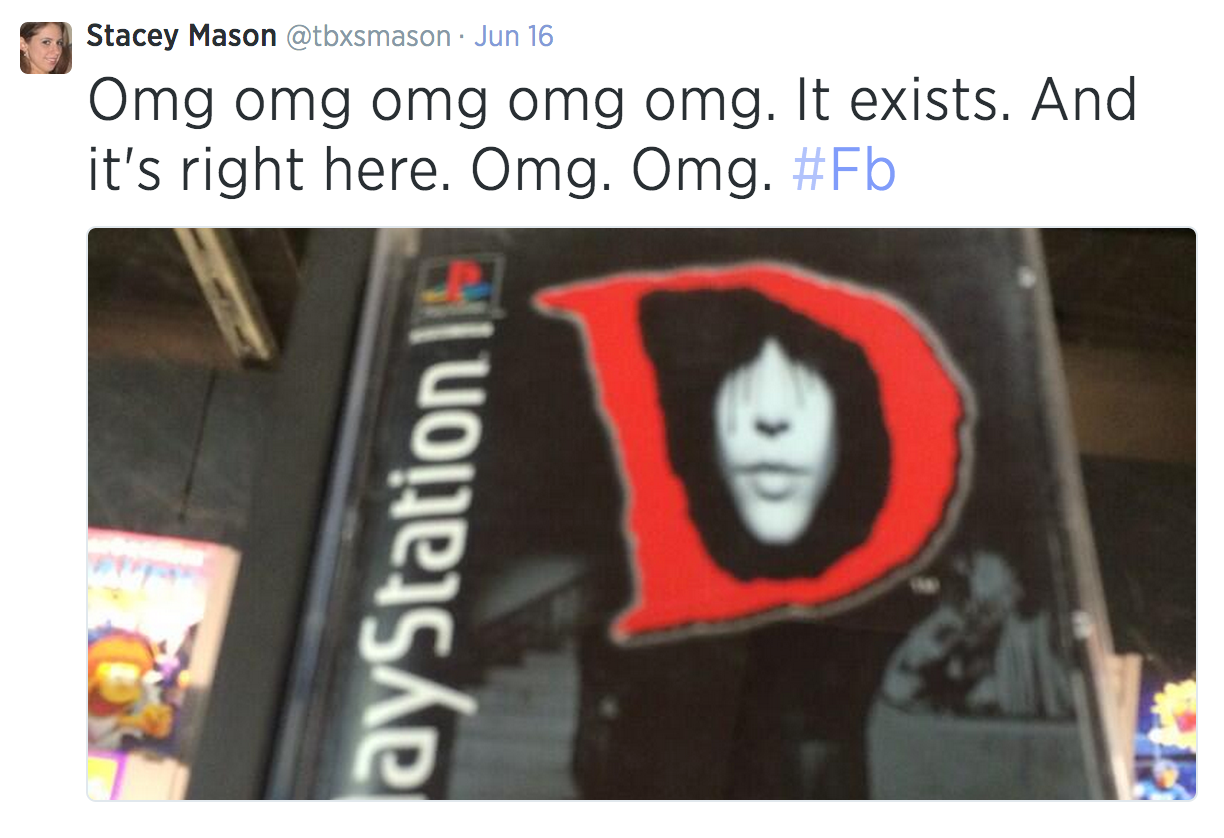A few days ago, I was at my local used game store and there, in the Most Wanted Games cabinet, I saw it: the game I had been looking for for something like 15 years. A game most of my friends never heard of: D for the Playstation 1. After doing a dance with my friend in the store, and literally jumping for joy, I regained composure and skipped home as quickly as I could. Later that night, we brought out the Playstation and fired up the game.
D is a very polarizing game: people seem to either really love it or hate it. It came out in 1995, and in addition to feeling very technologically advanced for its time, it dealt with violent themes that departed from more tolerated combat violence—themes like cannibalism and family violence, which games hadn’t really explored before. But the very things that made it advanced for its time haven’t aged well and the reason people hate the game is not for the low-poly 3D or for the cheesy voice acting: it’s for certain design decisions that were different from the games of the day, and for that matter are different from games we see now. So what can we learn from it?
The game was clearly building on the popularity of Myst, and follows suit as a 3D, first-person adventure game, but this time in a horror setting. You can generally face four directions and move forward in them, which feels frustrating now that we’ve all come to expect full 3D control of our characters. There are a lot of cutscenes, which we generally think of as “bad” now, but we forget that with the slower gameplay of adventure games, they don’t feel nearly as much like an “interruption” as they do in action games, provided they’re short.

D feels like a proto-Gone Home in the sense that the setting feels creepy and dangerous until you realize it’s an adventure game and nothing will actually kill you (probably). But where Gone Home begins with horror aesthetics before settling into a nice coming of age story, D starts as horror and gets darker as you uncover more of the story. There are some genuinely creepy moments, even with the aged graphics. Where the visuals lack technically, and should be immersion-breaking, the sound design picks up the slack and helps to create an experience that’s still gripping right up until the disappointing end, which honestly feels a bit phoned-in and weak by today’s narrative standards.
But the most interesting part of the game is the time limit. You are solving a mystery, and you have two hours real-time to do it with no saves. Before the age of the internet walkthroughs, this was a little more threatening, but even today its an interesting idea. The time limit adds a sense of urgency, but also makes the final decision weightier, because if you fail, you’ll have wasted the last two hours. And this feels great….for the first playthrough.
The problem with the time constraint is that if you either run out of time close to the end or get the “bad ending,” (which makes no qualms about telling you it’s the bad one, even though you completed all the puzzles in the game), you have to go through the same content again. Nothing changes on your second playthrough, so everything that made it suspenseful, or made the story interesting, has nothing close to the same impact. In a game where the reward for completing puzzles is story content, or really knowledge if we’re getting right down to it, we gain literally nothing through replay to find the other endings.
But despite that, one can see in D a milestone in games’ development into an expressive medium. D was trying to innovate, and it points toward a promising future that game narratives haven’t lived up to. I’d love to see what D would be if it were made today: keep the time limit intact, but add more branching of the narrative, more adaptive puzzles based on content the player has seen, a more rewarding set of endings upon completion, more tantalizing flashback scenes, adaptive creepy surprises in the mansion.
Now that people are finally starting to get tired of modern military shooters, and we’re seeing words like “market-saturation” around FPSs, I’d love to see what the AAA industry could do with narrative adventure games. Not action-adventure. Not RPG. But an adventure game with stunning visuals and as much design and programming effort going toward the complex narrative structure as we normally see toward weapon design.


